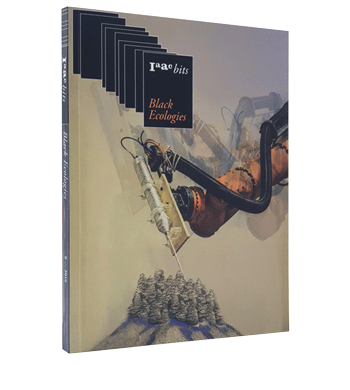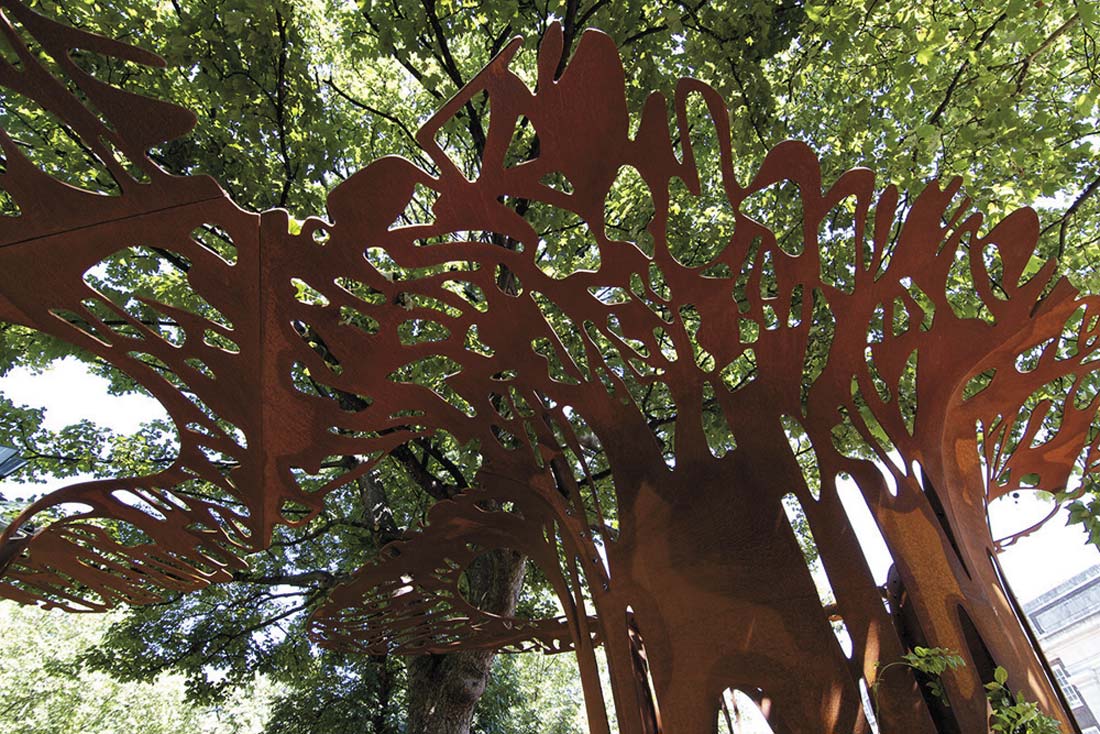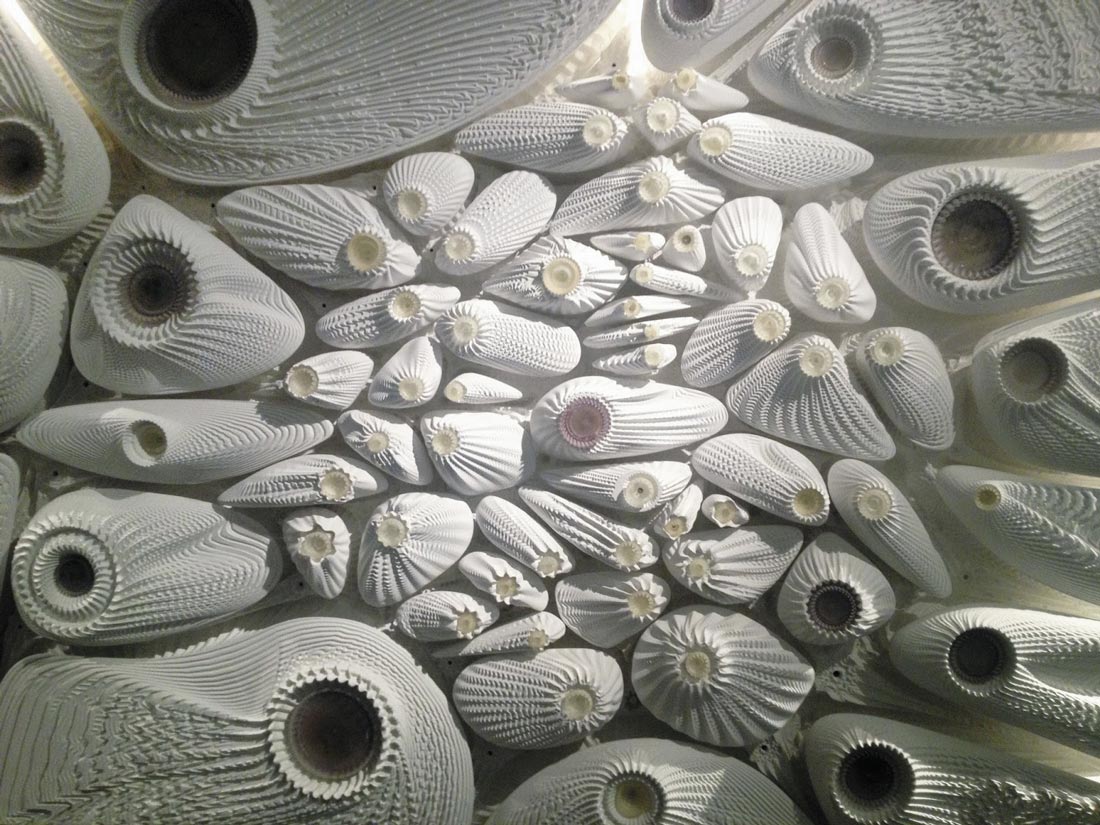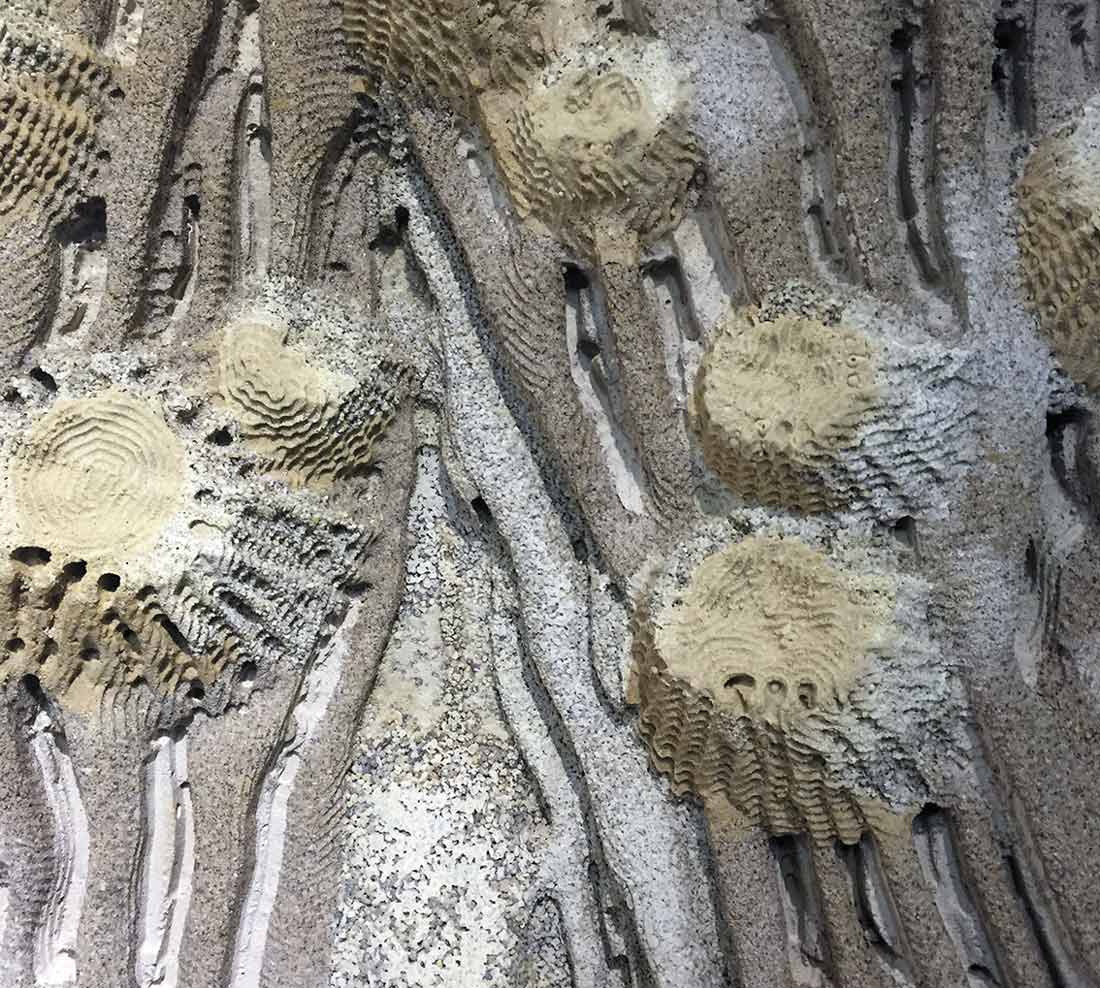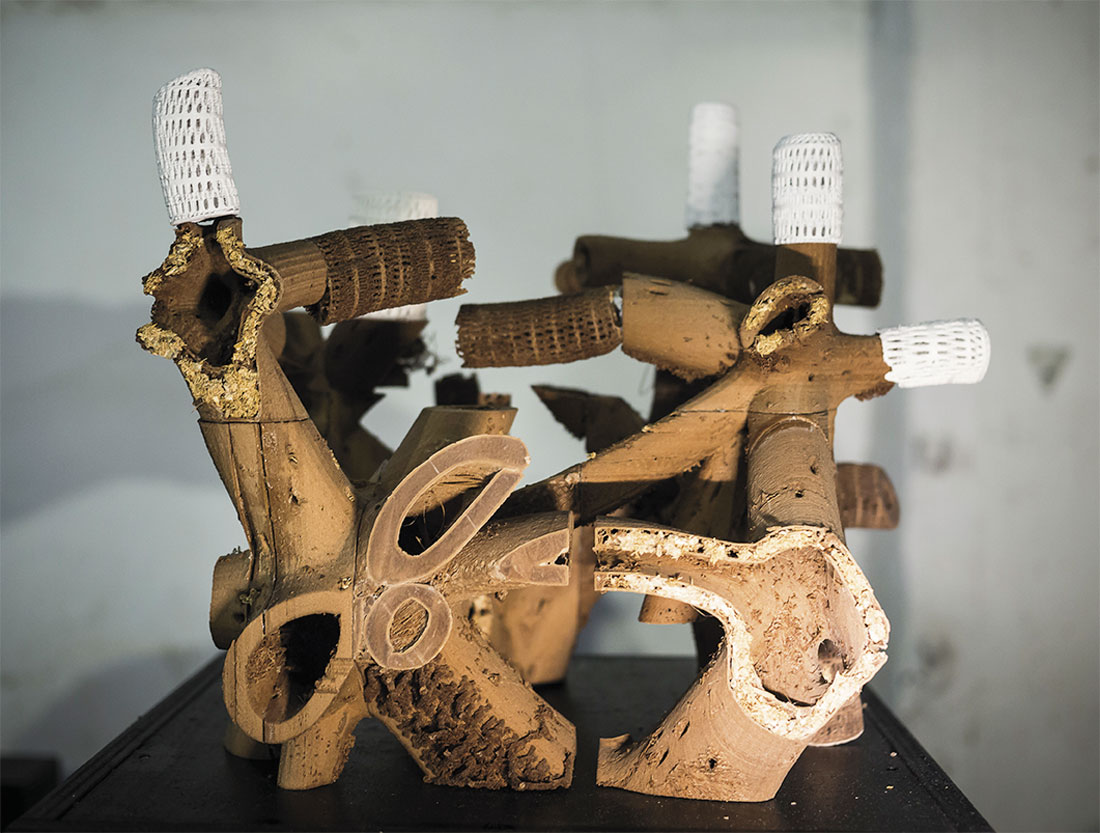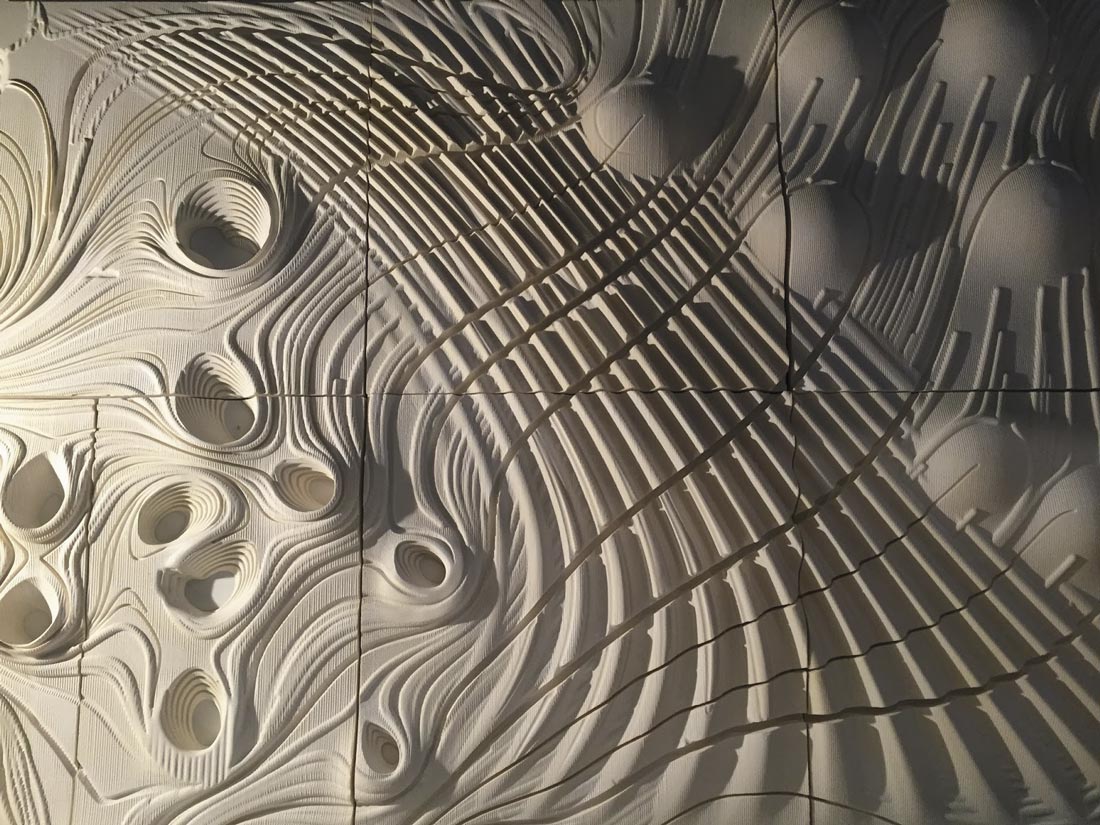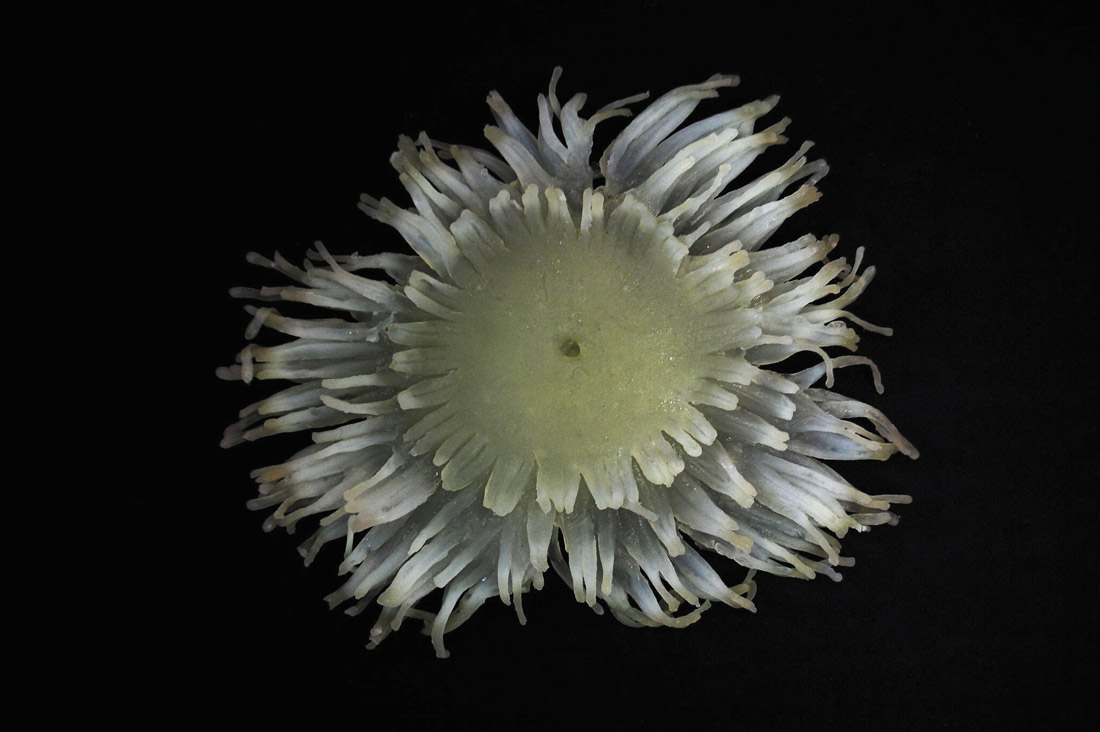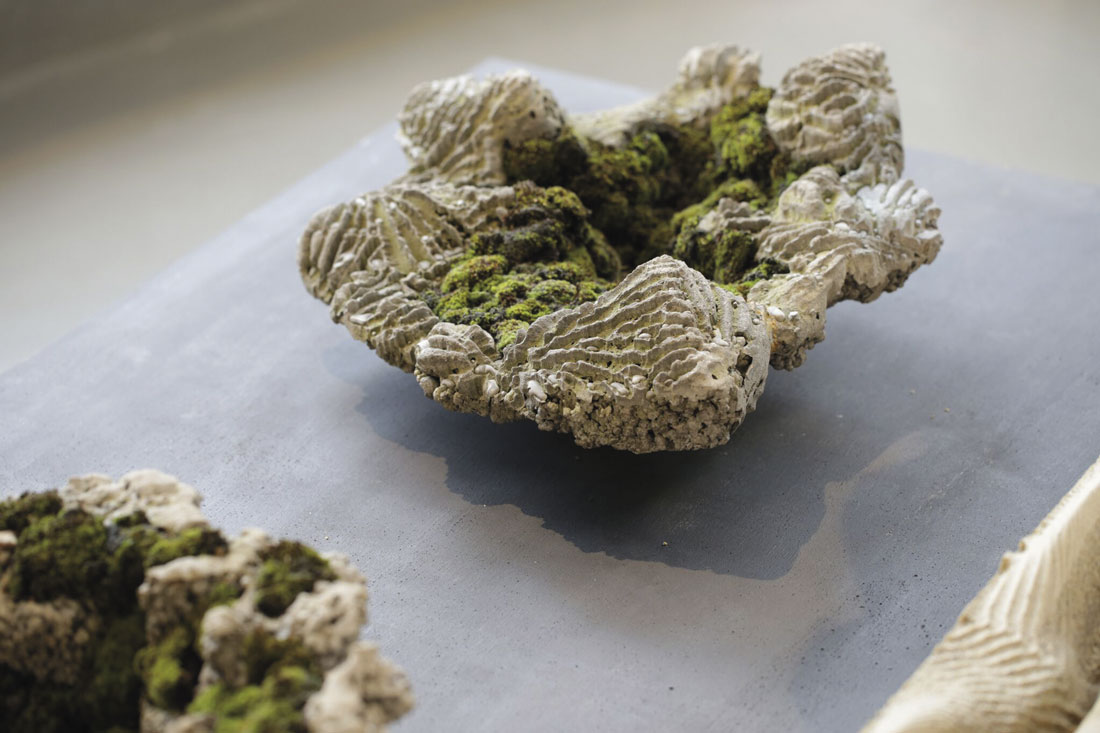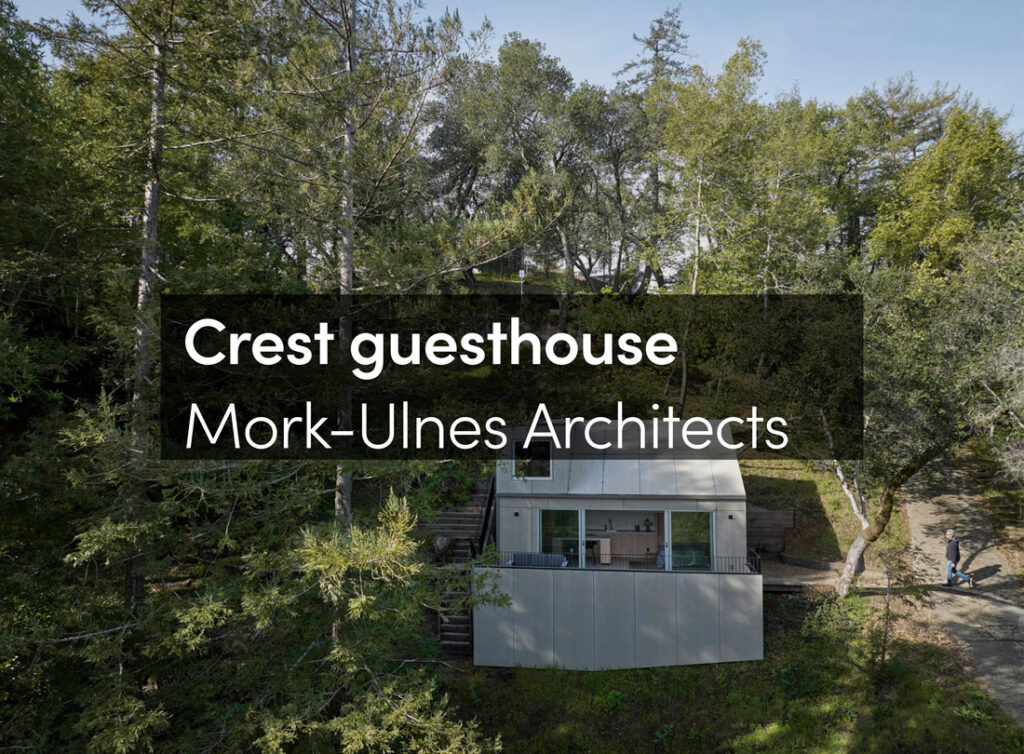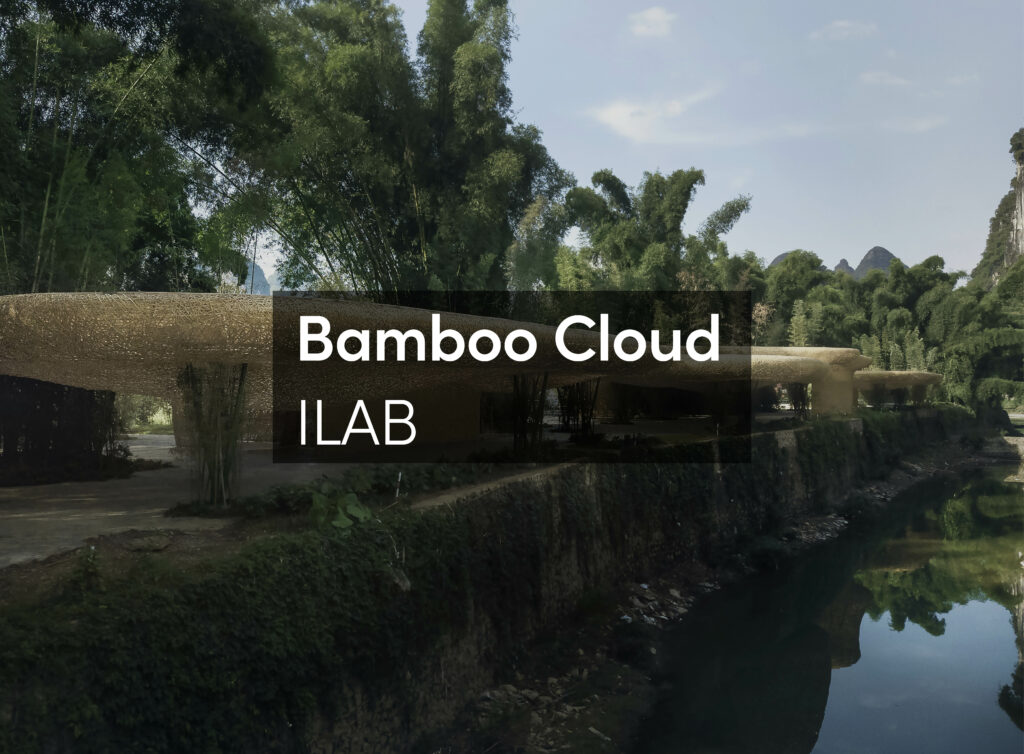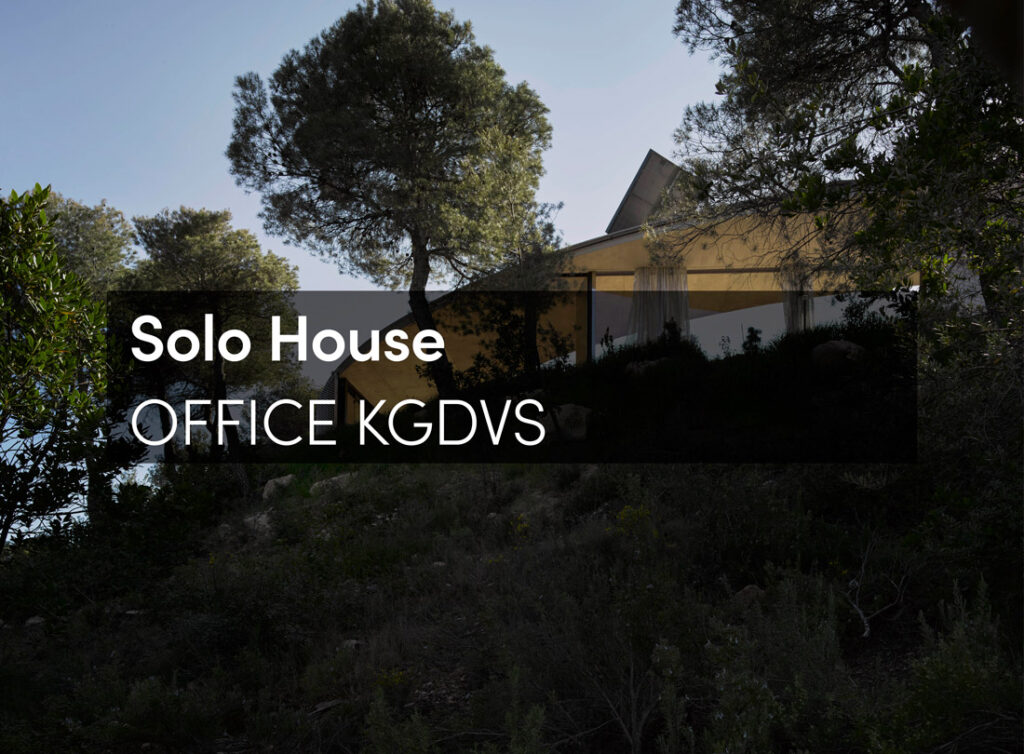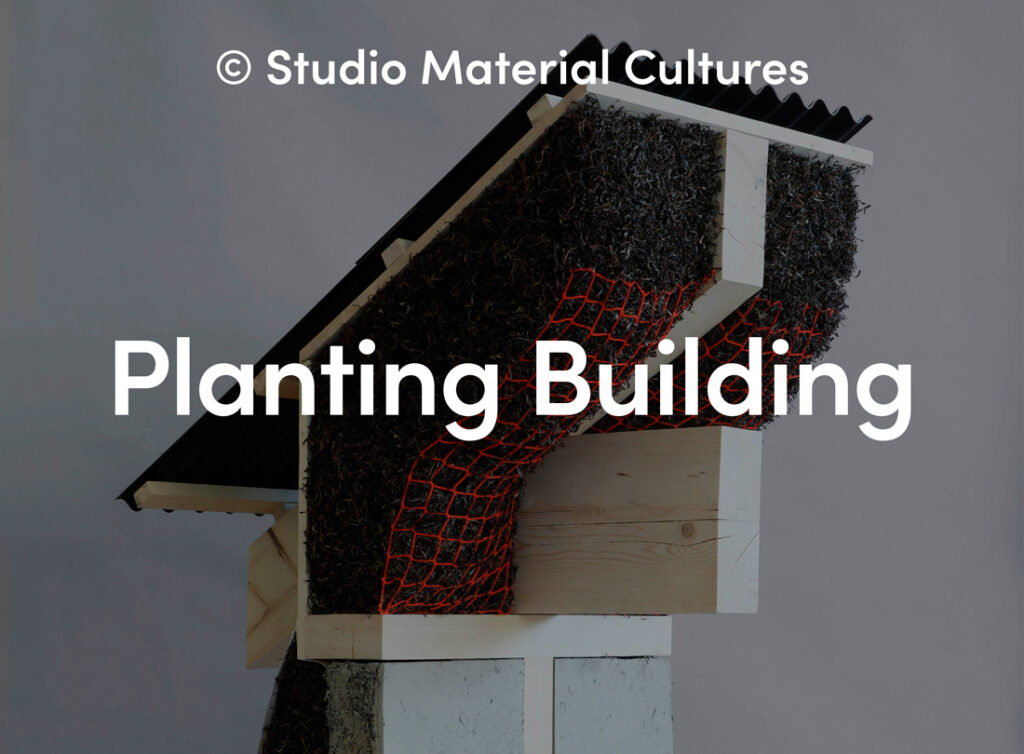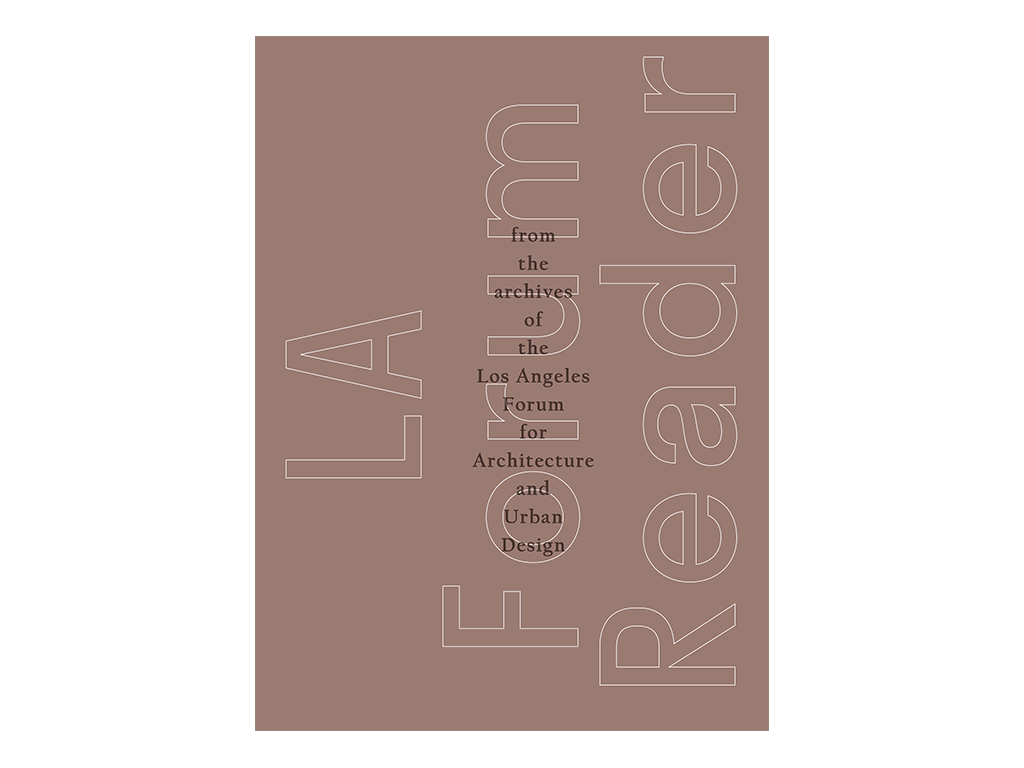Jordi Vivaldi: Since the end of the 20th century, we have been experiencing a shift in relation to our understanding of the notion of nature: we are moving from a conception of nature understood as Mother Nature (that is to say, a harmonic, perfect and secularized garden of Eden that only humans can disrupt), to another understanding of nature as being highly manipulable through technology (like in the recent cases of artificial DNA or the unfolding of the human genome). How do you think the notion of ecology should be interpreted given this new understanding of nature?
Marcos Cruz: I completely agree with you on the fact that the separation of what is artificially produced and what has been naturally grown, or has naturally emerged, is almost impossible to differentiate today; it should be read as a continuum. The reason is that, from a microscale to a macro-scale, there has been an input of humans; so, the notion of influence and manipulation of our natural environment is so huge that there are very few spots that you could still consider “wild”.
The other day I was in a small horticultural park in London. The person who runs it was telling me that it’s all wildlife, but they know that it’s much more difficult to keep the wildlife as it is than to produce an artificially wild one. They are trying to have only autochthonous plants and keep everything in a pseudo-natural state, which is a tremendous effort for them because there are too many invasive plants and species. This kind of untouched notion of nature doesn’t really exist anymore, so they are fighting for something that is nearly lost. We are shifting from a “super-natural” to a “supra-natural” world.
I think there are many levels of interpretation of this phenomenon. On the one hand, it is crucial to understand how we relate to the notion of an artificial, manipulated and mutated nature and environment, and how we can “defend” ourselves against what we have changed.
That’s actually what you are seeing with climate change and similar profound changes that are occurring on a huge scale: they are partly caused by us, but at the same time totally unpredictable. We don’t know how to position ourselves when we’re confronted with it.
I am thinking for example about the hurricane season that we witnessed in the summer of 2017, which was clearly the result of how we have been messing around with the environment and provoking ever more extreme climatic conditions, which are affecting us. But then we still continue building, like on the Caribbean islands, as though nothing has happened. That’s completely absurd. We’re in a position where we have to rethink the strategies of how to design and build in contexts that are of our own production.
On the other hand, I believe that there is a sense of great opportunity, especially when we consider that we could still minimize and even reverse climate change. Today we have radically new technical means to design, produce, and create systems in which we can work with and for nature in totally different ways. I am a true believer that humans can create incredible things. However, there are people who believe, in the field of biomimicry in particular, that nature has a perfect model, which we have to emulate. I don’t agree with that. I do think that we need to protect what we still have of our “natural” nature, something that has progressed and evolved throughout millennia, and that in many cases we can use it as a model. But we humans are creating new things that are quite extraordinary. We have huge numbers of inventions that are absolutely fascinating, and which are not a mere replica of nature. So, I think that if we join our creativity and our critical thinking together with the powers of nature, we can achieve some phenomenal results.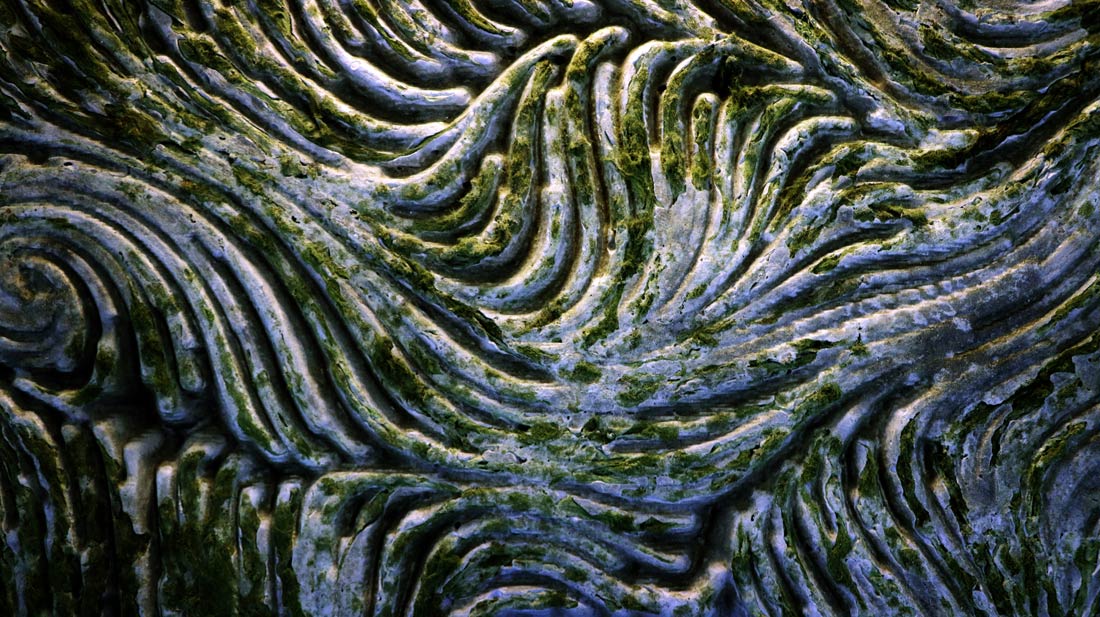
Algae[crete] | A Tectonic Hylozoism. Project of IaaC, developed at Master in Advanced Architecture 02 in 2017/18.
Student: Fabio Rivera; Faculty: Marcos Cruz.
JV: Taking into account this approach to the relationship between nature and culture, and narrowing down the discussion to architecture, it seems essential to understand the terms for establishing today a productive dialogue between nature and architecture. It is well known that both have a long tradition of encounters and disencounters, as we can see in the work of architects like Victor Horta, Wright, Nervi, Frei Otto, and many others.
However, given the contemporary approach you just described, which establishes a completely new scenario, how should architecture rethink its relationship to nature?
MC: The way I connect this dialogue to history is based on the fact that, in certain epochs, we have looked at nature as our model: in some periods it has acted as a formal reference and in others as a structural reference. When we mimicked ornamentation through natural patterns, there was a cultural dimension that explained it, but that mimicking act was, to a large extent, visual.
In the 20th century, however, we looked quite deeply into structural mimesis. We were looking at what was happening in particular biological conditions. Darcy Thompson’s book On Growth and Form was obviously of great influence for architects and engineers, having defined how we looked at the inherent geometries of nature and how they could be extrapolated onto much larger scales. Then, more recently, we have been looking much more at the environmental intelligence of natural phenomena. But I think the great shift now is that we are able to bio-integrate, rather than only being natureinspired.
Bio-integrated design goes beyond the idea of nature as a model or stimulus. Bio-integration tries to find new technological and material hybridities in a world where “natural-nature” is vanishing. Our influence is so profound that we are facing a “supra-nature”. We therefore need to be brave and take the opportunity to create new designs that respond to this new synthetic world that we have created. I think that bio-integration goes beyond the extrapolation of natural principles.
Of course, we can learn and make use of lots of natural principles, but the main point has to do with properly understanding phenomena like growth, evolution, mutation and material, in order to approach them in completely different ways. We are now experiencing a big shift, in that we are moving from thinking about tectonics, performativity and materiality in buildings to the understanding of architecture as an integrated system of inert and biological matter – a sort of continuous building tissue with a cellular-based structure.
However, the notion of bio-integration also emphasizes the fact that nature has vulnerable dimensions that we designers have tried for so long to avoid. Indeed, in this new world order things can go wrong, and this relates to the notion of fragility and unpredictability, which in traditional terms we have associated with rather negative and problematic values, implying a sense of imperfection.
I, on the contrary, like to talk about the “aesthetics of impurity”, which defines a totally different dimension of design that is biologically infused, and therefore volatile and changing. I find the idea of unpredictability fascinating and full of potential. In this context, we architects need to accept much more the idea that what we are designing and creating are scaffolds for inhabitation, but not only for humans, also for an entire surrounding biota that we depend on in our environment.
Alga(e)zebo Inhabitable folly or the London Olympics, Euston Square Gardens, London 2012. Detail of the integrated biophotoreactor and of the perforated double steel curvature)
Team: mam-arch London (marcosandmarjan); Engineering: Bollinger and Grohmann; Manufacturing: CSI; Biophotoreactor: Richard Beckett with UCL Algae. Photo Credits: Virgilio Ferreira, BREAD.
JV: Taking the notion of aesthetics that you’ve just mentioned, it is evident that, throughout history, nature has been an infinite source of evocative attributes for many disciplines. However, when we say that we are moving away from a contemplative nature toward a performative nature through extreme technification, it might seem like we are looking at it as a purely instrumental device.
How should we preserve or reinterpret this more poetic and aesthetic aspect of nature?
MC: We definitely still having this poetic aspect. I am much more a believer in adding new concepts rather than excluding old ones. We are not losing them, we are just adding new interpretations. We understand our context today as a multitude of imperfections and unpredictabilities, which makes us designers work in a distinctive way. I think that is a great challenge because we have traditionally worked for pure and perfect systems, where the performance of materials was completely predictable and finished in itself.
In that sense, the idea of architecture as a “product” irritates me, because the product aims to be a finalized and conceptually hermetic object. I refer to part of my research as “designing for aging systems”, because when designs deal with living matter, aging becomes far more fascinating than the preliminary moment of a product in its state of newness. The birth of the product is only a temporarily existing condition that will soon be gone; I like to design for conditions that are gradually changing rather than designing the process of aging itself. If you want to design that, you are being deterministic and trying to say, “This is exactly what is going to happen.”
I think that’s actually one of the great problems we had in the 20th century.
Architectural Biophotovoltaics, 2017. Bioreceptive magnesium phosphate concrete composite with embedded carbon fibre and algae in robotically extruded hydrogel to produce electric current.
Team: BiotA Lab / rC7 and Dr Paolo Bombelli with Hoda Eskandar Nia, Eleni Dourampei, Yuan Huang and Zhao Ziwei. Photo Credit: Chris Leung.
JV: This attitude of approaching indeterminacy as an opportunity rather than as a menace seems to be one of the key de-sign strategies of our contemporaneity. Is there any specific instrumental benefit to this, or does it have more to do with a rejection of modernist determinism and an alignment with how reality works according to the latest scientific theories?
MC: To be honest, I don’t see it from a benefits-based point of view, but from the idea that this is what it is all about: our environmental conditions and what we still call nature are unpredictable. If we are integrating this mutating nature into our design systems, then we have to accept that there is unpredictability, with or without any benefits. Besides that, it’s beautiful; from a human perspective, I find imperfections much more beautiful than perfect systems. I feel suspicious of perfection, either because it is excessively controlled or because it simply does not allow for something else to emerge. It’s totalitarian.
Algae-Cellunoi Wall installation with algae growth for Archilab, Orléans 2013. Permanent collection FRAC France.
Team: mam-arch London (marcosandmarjan) with Guan Lee and Richard Beckett. Photo Credit: Francois Lauginie.
JV: From the moment you situate the notion of benefit as secondary and you introduce the importance of beauty, a question seems inevitable: Do you think that architecture should make a better world or a more interesting one?
MC: That’s a good question – a really complex one since it touches many things. On the one hand, we are trying to make things better, because we are trying to respond to ongoing problems. I do believe that, as designers, we need to be hyper alert to understand how to respond to social, ecological, financial and political challenges and use them as an opportunity to find new creative solutions.
I think we need to have enough vision to understand not only what is happening today, but also what will happen in the future. There has to be a functional response to identified problems, and, in that sense, architecture can make things better. On the other hand, as cultural agents, we do need to provoke the status quo, which means that we might “create” problems rather than just attempting to resolve them. The experimental line of architecture has always been a very important one: it puts forward new visions and provocations of what future scenarios might look like. In that sense, we are probably creating more problems than we are solving.
I think that’s one of our great strengths: if you think about the utopias that have been conceived of in history, many of those visions got it completely wrong and were rather catastrophic. However, they were a quintessential part of a broader discussion about the types of spaces, environments and cities we really wanted to live in.
More conservative roots have always tried to escape from this speculative dimension. I even go further and see the need to embrace the aesthetics of impurity, the aesthetics of what is ugly and unpredictable, as offering the creative power to critique and generate substitutes for our reality. And then there is a poetic dimension; it is probably more related to a sensory and emotional dimension, something that is strongly associated with notions of “beauty”.
I personally don’t shy away from the idea of beauty. In my studies, I have examined the idea of the “ugly” and the “disgusting” a lot, but what I was aiming at was to find alternative modes of understanding beauty, in a less nostalgic and more radical way, in manners that we feel deeply attracted by.
Again, nature has a very important role to play in this. In very banal terms, if I compare the geometric complexity, fitness and refinement of a biological form with a piece of furniture in the room where we are doing this interview, I realize how sophisticated biological systems are. If I take these shelves from the room and I put them in my garden, I am reminded of how extremely simple the design is, and how we are still in a very embryonic stage of design development.
Plants have developed a complexity and intricacy that is so far beyond what we can achieve now. But, am I trying to mimic the plants? No. Yet, there is an inherent beauty and poetics in nature derived from its sophistication that I find really inspiring.
Bioreceptive Calcareous Composites, 2016. Multi-Material cast of a magnesium phosphate concrete wall prototype to promote selective growth.
Team: BiotA Lab / rC7 with Yuxin Jiang, Xinhe Lin, Zhili Wang, Qungyue Zeng. Photo Credit: Marcos Cruz.
JV: So, would you say that you are working under a biomimetic protocol?
MC: No. I think we have to do both. On the one hand, we have a nature-inspired approach and, on the other, we are exploring bio-integrated design. I think they are hugely complementary: they are both parts of the same sphere, but they are just looking at different aspects. One is more focused on engineering; the other is more focused on design.
Dormant Wall // Computational Workflow. Project of IaaC, developed at Master in Advanced Architecture 02 in 2017/18.
Student: Evelina Ilina; Faculty: Marcos Cruz; Support: Núria Conde Pueyo, Rodrigo Aguirre.
JV: Referring to this coexistence, we can apply this notion to one of your projects: the “Alga(e)zebo”. It represents many of these statements related to biointegration, performing some natural principles, while at the same time resembling the natural source that was used: a tree. The point is that, actually, as long as it performs as a tree, it could look like any other form.
Why is it important to keep not only the operativity but also the image of the original source?
MC: The Alga(e)zebo was done without any intention to simulate the visual presence of a tree. Once we were interviewed, and someone said that it looked like bark that was peeling off. I liked that analogy, but I had never thought about it. The only intention of the Alga(e)zebo was to bio-integrate nature on three different scales: on the largest scale, the perforation of the corten steel had a structural reason, while on a metaphoric level we wanted to create a relationship with the foliage of surrounding trees; then, on a medium scale, the gazebo was to be read as a scaffold for plants to grow into the surface lattice; and, finally, there was a much smaller scale based on the integration of algae into vessels where they were choreographed in their growth.
The other intention we had was to display an ornamental and structural form that was expressive: the perforation of the corten steel plate provided a much-needed lightness that held the cantilever in place, creating a patternization that generated the dialogue we wanted with the surrounding trees. We called it an inverted foliage. But the Alga(e)zebo was also a place to be inhabited. I am naturally more interested in the physicality that surrounds space than space itself, or the space that is produced within the physicality of things. This goes back to my PhD, where I explored the idea of inhabited interfaces in architecture.
For me, they were more than walls or columns; they were structures, spaces or environments which could be occupied physically or as a projection of our minds, creating an amalgam or manifold between us and our surroundings. The Alga(e)zebo was something like that: an unfolded inhabitable interface, where people were attracted to sit and project themselves into; a small space of coziness that helped people to regain a sense of orientation within their context.
The Alga(e)zebo was, at the same time, designed for the sake of innovation itself, and that’s why I am interested in nature, because it challenges us to move forward. I am a believer in our “Zeitgeist”, which is why I think it is so important to look at what is going on in other disciplines. I like the challenge of each project to push the boundaries of technology and conception.
So, for me, the Alga(e)zebo was a way to discuss how we could build a pavilion with a technology that had never been built before. That was the reason for why we used a double steel curvature system that was perforated, which was initially rather nonsensical.
The company CSI in Germany was very knowledgeable in this field, because they produced many of the Anish Kapoor double steel curvature sculptures. But they had never dealt with a continuous surface that was perforated, which made the material behave very differently compared to its normal state.
The Alga(e)zebo was, in a technological sense, a statement in which we tried to define the ornamentation of steel within double-curvature systems, with both handmade and machine-made plasma cutting techniques. There was a lot of uncertainty during the process of design and manufacturing, but we managed to do it. I love the fact that each project can be used to take a new step. The Alga(e)zebo was an opportunity to answer questions like: “Can we integrate different technological logics when we integrate ornamental features, structural performance, inhabitation, and biophotovoltaics to extract energy from plants to light up the folie?”
In that sense, I always come back to nature and biological systems that bring about new opportunities for design. For example, they suggest new ways to control water retention and absorption, as well as metabolic exchanges that we simply can’t deal with in architecture, at least not yet. That is why we have to take advantage of these qualities in nature, while also being inspired by it.
That reminds me that I’m a great admirer of Romanticism: I like the poetic dimension of it and, at the same time, the fascination that we feel when we see something complex that we can’t really explain and understand.
But I also love the fact that, philosophically, Romanticism is really seen as part of a cycle of growth and death. Western philosophy has excluded this type of cyclical thinking for a long time, relying for too long on the Cartesian thesis instead. However, now we are discovering that this circular thinking process positions us in a totally new way; it offers a new perspective to embrace bio-integrated systems.
JV: The proximity established between the application of recent technological innovations and the fascination for Romantic aesthethics seems to be one of the main challenges of your work. However, it could be argued that there is a certain nostalgia in that Romanticism, a hidden desire to recover the notion of nature as mystical origin rather than as a performative substance.
MC: I don’t like nostalgic Romanticism, because I am not at all interested in the “retro” aspects of nostalgia. I am much more a believer in what resulted from Romanticism. It suggests the idea of constructing and making things differently: the emotional state that we have within the context we produce, thanks to the relationships between high-technology, new innovations and a sense of natural beauty, which I find fascinating. I consider these aspects conjoint and part of a holistic vision.
Design for ageing buildings. Exhibited at the Mexican Consulate in Barcelona. Project of IaaC, developed at Master in Advanced Architecture 02 in 2015-2016.
Student: Yessica Mendez; Faculty: Marcos Cruz.
JV: In fact, your work incorporates research that comes from many disciplines: architecture, biology, ecology, technology. What should the conditions be for a fruitful dialogue among them? What position does architecture take in this interdisciplinary cluster?
MC: That’s a really difficult issue, because it has multiple answers. The first thing to say is that many of these disciplines do indeed employ very different working methodologies, which are difficult to combine.
The sciences are, by and large, more positivist and linear in their approach, while the arts and humanities are far more discursive and critical. Design is somewhere in between, and contemporary interdisciplinary working procedures are bringing these fields together. This can already be seen everywhere, but it will be even more evident in the future: people of different backgrounds working more and more collaboratively and new hybrid disciplines emerging. I personally find it far more stimulating to exchange thoughts with biologists, engineers, chemists, musicians and so on, than to spend my entire time with architects discussing design. I feel that I can give people from those disciplines something they don’t have, and they can give me something new.
The possibilities that exist in the “in-betweens” of these fields are far more attractive. I am obviously not the first one to make this argument about innovation being produced in the cross-boundaries of disciplines.
But that really is where the great potential of our current and future design lies. The fact that the boundaries of architecture are growing and becoming increasingly blurred is absolutely wonderful. I like to think of people who use all sorts of design tools – from computational techniques, to robots, laboratory equipment, etc.
Designers are hybrid creatures who exist somewhere between these fields in a new breathing ground. That reminds me of an interesting example: a few years ago, I wrote quite a bit about David Cronenberg’s film “eXistenZ” from the late 1990s. When I saw the gamepods in the movie I wondered who was able to conceive these “synthetic neoplasms”, as I defined them. Who would be able to design and fabricate these uncanny semi-living objects that were not yet achievable, but at the same time not too far from a possible reality?
Cronenberg gave some suggestions in the film which were rather provocative: in order to produce the gamepods, there were farms full of organs from genetically mutated amphibians that were used in the assembly of the pods. The main point was that the game-pods implied the existence of some sort of designer-surgeon who was able to create these things – having the surgeon’s capacity to control and grow different organisms together, while being able to plan and use design tools to develop the complex morphological, programmatic and aesthetic qualities of the pieces. The game-pods were, for me, the point of departure for questioning what future design could be, which was for sure a hybrid activity: multi-layered and multi-programmatic and totally interdisciplinary. On a side note, there was a remarkable similarity between the pod’s design and Le Corbusier’s early Objets à la Réaction Poétique, which was really weird and rather intriguing.
But back to your question, architecture is, for me, many things simultaneously. I still believe in architecture’s unique power of thinking biologically, tectonically, structurally, spatially, programmatically, all at the same time – which is what ultimately results in making great buildings manifolds and not products.
Poikilohydric Wall Highly variable three-dimensional surface morphology to promote a biodiverse poikilohydric biome.
Team: BiotA Lab / Marcos Cruz and Javier Ruiz; Computation: Javier Ruiz.
JV: If this feature is something specific to architecture, how can we connect it to interdisciplinarity?
MC: To be multi-layered is specific to architecture because conceiving, designing and constructing a building is unbelievably difficult but absolutely amazing, especially in the case of great buildings. The majority of offices, however, produce enormously dull and “flat” buildings. Those who work in a more experimental way end up not involved in the construction of buildings to escape the tremendously difficult and constraining realities of today’s construction industry, by focusing on small-scale objects, installations, prototypes.
Hydrogel Scaffolds for Algae Proliferation Robotically extruded hydrogel with embedded algae, Bartlett London 2016.
Team: BiotA Lab with Julie Hagopian, Sanika Mohite, Qian Huang, Xinyi Zhou. Photo Credit: Julie Hagopian.
JV: How would you crystallize these reflections in architectural projects?
MC: I am trying to develop innovative work with students here at IaaC and also at the Bartlett which fits within a broader discussion about how to situate architecture and design in the future. I am making a big effort with students to step into new territories, because, as I said, I see every project as an opportunity to innovate.
At the same time, I think that materializing interesting concepts is challenging, especially when we use design tools. Many students try to use escape tactics to avoid designing, which is why I insist with them to push the boundaries of conventional materiality and form, through hybrid and interdisciplinary methods of design.
The fact that things are physically made is crucial in my opinion. The IaaC, the Bartlett and a few other schools are great places in that sense, because you really fabricate things. What I do with students aims to biologically integrate growth and living systems within the static and inert tectonics of architecture. Then, there is the environment that influences the biological evolution of plants and animals and the buildings we produce.
We witness complex exchanges of material, geometric, biological and environmental conditions, which is why all the work I’m doing has this multilayer dimension that I mentioned before. In any case, the material properties of design are very important for everything that is bio-integrated. I like to argue that today “form follows material”, which means that once you understand the material properties you are working with, you are able to design with specific species in very defined contexts.
A few years ago, I defined the concept of “neoplasmatic”, which defined conditions of growth outside the body that originally hosted it. But it was quite far-fetched to discuss in architectural terms. In medicine, a neoplasm is a tumor, but from a creative point of view, it is a mutation of a growth system that has its own rules, different from the host where it originally came from.
The neoplasm is something that really has to do with flesh and tissue, as well as growth processes that have a very complex aesthetic. In cultural terms, the “neoplasmatic” introduces a new plasmatic dimension of architecture that is semi-living and that is also bio-integrated.
It also suggests using human and animal flesh as a material for design – which has its own dangers. For a long time, artists have been fascinated by this. I liked that, in art and in cultural studies, notions of the grotesque, the abject and the ugly allowed us to develop a different understanding of the body and society.
I knew that in architecture such concepts were avoided, because they challenged the basic aesthetics and technological grounds from which designers departed. We should not forget that botanic phenomena usually do not disgust us, whereas animal features are able to repulse us much quicker and more intensively.
On a formal level, the “neoplasmatic” had to do with the amorphous, the free-form and all other conditions of geometry that we probably still don’t know about yet. For this reason, I parked this term and the research connected with it for a while. I needed something else before coming back to it. I believe that it will take some time – maybe five or 10 more years. I don’t know.
Bioreceptive lightweight concrete component with moss growth in exhibition at Super Materials, The Building Centre, London 2016 (components designed and built in 2015).
Team: BiotA Lab with Wen Cheng, Sul Ah Lee, Taehyun Lee, Dan Lee. Photo Credit: Christopher Tubbs.
JV: So are you planning to move your focus from botanic design to neoplasmatic design?
MC:: Yes, without excluding the botanic, of course. I think it has an extraordinary amount to offer us, and it is a fantastic ground for experimentation and design. For example, we have many cryptogams around us that are poikilohydric. They are ancient species that are hysiologically very simple and therefore unable to defend themselves against desiccation. So, the cellular issue of these plants becomes dormant when exposed to long periods of drought. But when they receive a bit of water, they immediately switch on and become photosynthetic. This demonstrates that, although small, they are actually very resilient. They are capable of surviving in a wide variety of contexts.
It is really interesting that plants in their evolution found mechanisms to defend themselves against drought, but with the aridity that we are seeing right now, many plants are going to die out in the most xeric environments. The ones that are mostly capable of surviving are the most primitive ones. Poikilohidry is important for me when talking about “bio-receptivity” in buildings: all the external surfaces are in some form or manner bioreceptive, because they will eventually be biocolonized in time. If we really expanded on this topic and implemented bioreceptivity on a very large scale, we could really shift our cities from being the biggest polluters to becoming active agents in reversing climate change. Rather than collaging green patches everywhere, as you can see in so many fake images, our buildings should become biologically active, or even poikilohydric, to help regularize our environment.
I think that we could respond in a more functional way to the current environmental problems that we have caused. And architecture has a special role to play in this, once it becomes bio-integrated and bio-responsive. At some point, things will also come back to us, to the human condition. In the art world, it is easier to work with this, while for architecture it is not such an immediate and straightforward theme. I realized that I was risking trivializing and simplifying the concept of the “neoplasmatic”. That’s why I needed to park it again. But I really think that our future is “neoplasmatic” in what concerns the biologicalization of everything that surrounds us, and with it comes the notion of imperfection, vulnerability and the unpredictability of what we are designing. In this context, advanced software is hel-ping us to predict very complex growing and emerging systems, and it is starting to open the doors to a type of design sophistication that we didn’t deal with before. The geometry of biological tissue and cellular structures is more interesting than the geometry of objects as we used to define it.
We are sort of living point clouds rather than surfaces and planes as traditionally understood. This is certainly part of the “neoplasmatic”, but we don’t reckon what it means exactly yet. We need more time to get there.
